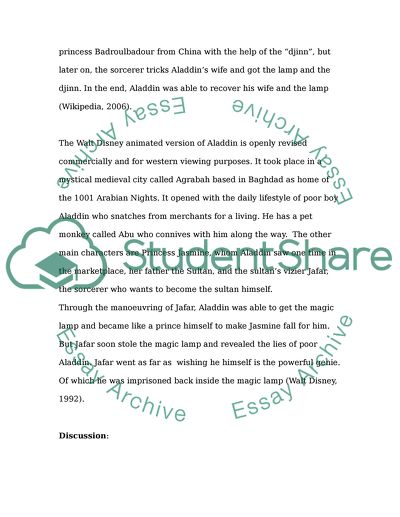Cite this document
(“Arabic Culture in Disney's Aladdin Movie Review”, n.d.)
Retrieved de https://studentshare.org/sociology/1534614-arabic-culture-in-disneys-aladdin
Retrieved de https://studentshare.org/sociology/1534614-arabic-culture-in-disneys-aladdin
(Arabic Culture in Disney'S Aladdin Movie Review)
https://studentshare.org/sociology/1534614-arabic-culture-in-disneys-aladdin.
https://studentshare.org/sociology/1534614-arabic-culture-in-disneys-aladdin.
“Arabic Culture in Disney'S Aladdin Movie Review”, n.d. https://studentshare.org/sociology/1534614-arabic-culture-in-disneys-aladdin.


